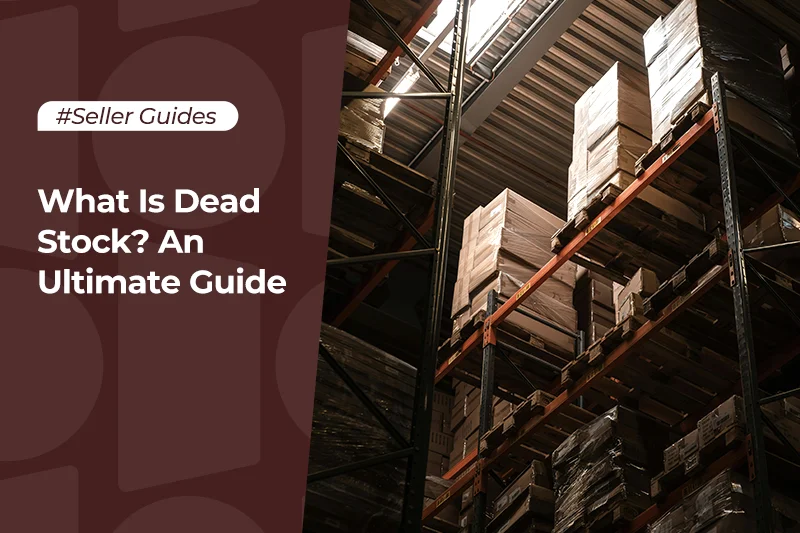Pain Points and Challenges for B2B E-commerce Sellers in 2023

The world is an ever-evolving marketplace and B2B e-commerce is not left out. By the day, more businesses are realizing the power of B2B e-commerce in driving revenue and are keen to key into it.
Growth on this scale, however, is not without its challenges. Unique solutions ultimately invite unique challenges and the B2B e-commerce clime is no stranger to those. This article will showcase the unique challenges that B2B e-commerce sellers face on a daily basis and will proffer the solutions to them.
Table of Contents
Introduction to B2B E-commerce in 2023
In 2022, the global market size for B2B e-commerce stood at over $7.9 billion and the industry is set to experience a 20% explosion within the next seven years.1
With this shift to convenience-based dealings, more customers are expecting businesses to deliver their needs to their doorsteps. The B2B e-commerce space currently presents superb marketing and growth opportunities that can cater to the modern consumer’s needs.
Aside from convenience, B2B e-commerce has gained traction over the years and has amassed some major perks including:
- Audience size: Having a global reach is something most businesses could only dream of. Today, because of B2B e-commerce, even an SME can have a global audience. Businesses are able to provide services with few physical limitations and that is convenience defined.
- Consumer analytics: With B2B e-commerce platforms offering analytics and insights on every customer’s journey, you never have to wonder why your customers act the way they do. Most e-commerce platforms have embedded analytics that can allow you track and measure your customer’s behavior, as well as tailor it with more specific marketing strategies.
- Super scaling: You never have to worry about renewing - or upgrading - the rent for your shop with e-commerce. All you need do is increase your order bandwidth, or product range, and watch your business scale to greater heights.
- Unique customer preferences: With embedded analytics and algorithms, watch technology do your marketing by targeting and suggesting your products to possible buyers. This creates a customizable and unique experience for your customers as their recommendations become more specific.

Pain Points and Challenges for B2B E-commerce Sellers in 2023
One can scarcely speak of the B2B e-commerce space without the mention of COVID. The proliferation of the market during the pandemic caused a major shift in the dynamics of business.
The year 2020 alone presented over $2 trillion in B2B e-commerce sales, and over 90% of B2B companies reported significant e-commerce usage after COVID struck.2
With everyone scrambling online to do business, one can imagine the challenges that sprung up along the way and continue to bite e-commerce sellers hard.
Intense Competition and Saturation
Over-saturation is perhaps one of the biggest challenges that e-commerce sellers face daily. Having to deal with dupes of a product can be tough as a seller. B2B e-commerce businesses are cropping up everyday and those numbers are currently standing in their millions.
Being present on an e-commerce platform that reaches a global audience can be challenging as it exposes a business to novel challenges such as language, currency, and culture barriers. If not properly set on the right platform, a business can give in to these challenges and fold.
If your product cannot stand for itself, it gets lost in the crowd. And no matter what you’re selling, there are multitudes of sellers out there promoting something similar. One of the major fallouts with intense competition like this is lack of visibility as well as uniqueness.
Additionally, intense competition also leads to lack of brand loyalty, which is a major challenge among sellers. E-commerce has somehow eliminated the traditional handshake that used to seal deals between businesses and has left sellers open to fierce competition as buyers now have the entire market at their fingertips.
Changing Consumer Behavior and Expectations
Understanding consumer behavior is key to knowing their preferences and meeting their needs. However, e-commerce shopping sometimes makes consumer behavior erratic or unpredictable. With access to various online channels, consumers can now do extensive research which will influence their buying decisions. They also expect tailored preferences and recommendations.
Thus sellers must find a way to improve customer experience by targeting individual or cluster groups of customers with similar buying habits. An e-commerce business that cannot leverage on SEO or targeted ads will have trouble defining customer habits and as such, will tend to lose potential buyers to competitors.
Customer loyalty also comes into play here. Unfortunately, with the rise of B2B e-commerce options, customer loyalty is at an all-time low and many customers may only buy from an e-commerce business once.
Logistics Complexities and Shipping Costs
Shipping and logistics complexities present an ever-present challenge to B2B e-commerce sellers. Meeting customers needs and on time is crucial to improving customer experience and giving you a competitive edge in a heavily saturated market.
B2B consumers buy in greater, wholesale quantities than their B2C counterparts and shipping sometimes poses a challenge for bulk items. Logistic complexities are manifold and present themselves in various stages.
While global reach is every business’ dream, custom clearance and tariff issues are everyone’s nightmare. Deciding on the right logistic carrier, sustainable and durable packaging, tracking of orders, customs requirements and shipping costs, as well as final lap delivery all pose significant challenges for B2B businesses.

Payment Security and Fraud Concerns
Unfortunately, payment fraud is a lingering issue across both traditional and e-commerce B2B. More than 19% of payment inquiries received by B2B merchants are fraud attempted and over 60% of fraud losses have been as a result of payment fraud.3
Payment fraud is reported to be the number one concern for B2B e-commerce sellers.4 Fraudsters are aware that B2B sellers process high volume orders which signify higher amounts and higher risks. In cases of credit card fraud, the merchant will most likely be responsible for the charge-back if it occurs. As much as fast payments are desirable, they also leave room for fraudulent activities.
Regulatory and Compliance Issues
E-commerce sellers must meet up with compliance regulations at all times to ensure longevity of their businesses. B2B e-commerce businesses have to meet regulatory standards on various fronts including taxes, shipping regulations, affiliate programs, data protection regulations,and payment regulations. Non-compliance to any of these regulations could invite lawsuits, settlements, or could even be classified as a criminal offense.
Lack of Brand Visibility and Trust
Unlike a traditional brick and mortar store, an e-commerce store may not have a big fancy sign to draw buyers in. However, an e-commerce business is meant to build visibility and trust through its operations and its marketing schemes. Thus, the business would need to identify, understand, and target its actual market base, then tailor messages to fit their preferences and draw them in.
The challenge of brand visibility mostly stems up in a saturated market with a lot of similar products or services. Furthermore, buyers are typically less trusting of lesser known brands.

Integration with Existing Systems
Data silos are one of the biggest deterrents to digitalization.5 They can cause a disconnect or spread incomplete information which may cause difficulties in scaling a business. The solution to this challenge is integration with existing systems. This will allow for seamless transitions or transactions between as many applications or data sources an e-commerce business needs to run optimally.
Integration also enables a business to reach buyers on other levels and platforms. This can mean serious growth for a business. It drives operations efficiency and can broaden a seller’s understanding of customer needs to boost customer satisfaction.
These integrations would be based on your business goals and your customer needs. Integration poses a challenge for e-commerce businesses as costs may be high. Furthermore, some systems do not integrate seamlessly with certain e-commerce platforms thus data could be lost in transit or completely unavailable.
High Initial Investment and Operational Costs
An e-commerce business would incur some significant start-up costs if it is to run successfully. Firstly, setting up the platform and investing in cutting-edge security systems, servers, and data storage would incur high costs. The business would also need investments in cybersecurity measures to protect customer data and ensure compliance to regulations.
Additionally, integration costs may run high depending on how many automations you want to run for your business. The business may also need investment in reliable and high-quality customer service and support to attend to all customer needs. Customers do not have someone they physically can speak to over-the-counter, thus great customer service is key to running a successful ecommerce business.
How Alibaba.com Helps Address B2B E-commerce Pain Points and Challenges in 2023
Yes, the challenges in the B2B clime are myriad, but they are not without their solutions. B2B e-commerce giant, Alibaba.com, currently stands at the forefront of innovative solutions for the challenges the B2B marketplace faces everyday.
Alibaba connects over 200 businesses with the China wholesalers market, as well as connecting thousands of buyers and suppliers around the globe with each other. No matter where your business operates from, or if it is looking to buy products in bulk wholesale, Alibaba.com can connect you to the right merchants.
Starting out in 1999 and finally becoming profitable in 2014, the platform has gradually formed a niche for itself in the e-commerce world. The platform leverages on its wide reach into the various world markets, strong market presence, brand name, technological innovation, and a nutritious online ecosystem soup. More so, Alibaba.com has a focus on SMEs, so no business is too small to scale or go international.
To further buttress, here are some ways Alibaba.com head-on addresses the pain points that B2B e-commerce sellers face.
- Alibaba’s global e-commerce markets is how a B2B e-commerce seller can scale irrespective of oversaturation and intense competition. You can stand out from the crowd and face global e-commerce challenges head-on.
With more than 10 million active buyers in over 200 countries and regions, Alibaba.com is set to scale your business into international waters. If you’re looking to expand your local business and go international, Alibaba.com has an active market for it, so you don’t have to be concerned about demand from buyers.
Furthermore, delving into international waters opens you up to the challenges of language barrier, currency conversion, and localization. Opening your digital storefront with Alibaba gives you access to in-built features that can propel you global whenever you’re ready while you let Alibaba.com handle the language barrier, currency conversion, and localization challenges.
Establishing your e-commerce business on a platform like Alibaba gives buyers more trust in your brand thus improving brand loyalty.

- Payment security has been identified as one of the major concerns of most B2B e-commerce sellers. These payment and fraud issues are also taken care of as the escrow services provided by Alibaba.com’s Trade Assurance does the work of securing payments on both ends.
When a buyer makes a payment, the Trade Assurance tool holds the payment in an escrow account until the goods are delivered. Then the payment is released to the sellers.
Trade Assurance also ensures that the buyer's products arrive when due and can act as an intermediary in cases of issues that may come up, thus fostering loyalty and trust in your brand.
- Alibaba Cloud covers all your needs for integration with already existing systems as a B2B e-commerce seller. Users can transmit, convert, migrate, or synchronize their business’ data. This can promote scalability for the business and enable it to reach a wider market.
By syncing data from multiple sources, B2B sellers get to better understand their customer’s needs and the market. Thus, Alibaba covers your e-commerce business for integration for seamless transactions.
- As established, brand visibility and trust is a major challenge that e-commerce sellers have to deal with. But, with Alibaba.com’s powerful advertising and targeting tool, your e-commerce business can reach more customers with targeted ads and help to increase your product visibility at the same time across multiple touch points. Its keyword advertising and premium sponsored ads tools help your business to rank higher in SERPs.
The product showcase tool can also provide up to 43% more exposure for selected products. It gives your product more exposure, higher ranking, and more advantaged listings. All these work to shoot up visibility, and buyers tend to trust sellers who rank high in their search.
Start Selling on Alibaba.com Today!
If you’re a new seller trying to kick off your B2B e-commerce business and hit the ground running, or you’re trying to scale and expand your existing business, then you need to make sure you’re on the right platform and you’re making the right moves.
Many myths about e-commerce trading have been debunked by Alibaba.com. It is possible to have an automated system that caters to your various customers and still be able to afford them exceptional customer service.
While one does not just simply start an e-commerce business without counting the cost, Alibaba.com makes it possible, understandable, and most importantly, scalable. Its global reach, market penetration, in-demand tools, and household name is what every B2B e-commerce business, big or small, needs to soar.
You too can become a seller on Alibaba.com today! Explore the far-reaching potentials of your business on Alibaba.com.
References:
1. https://www.grandviewresearch.com/industry-analysis/business-to-business-b2b-e-commerce-market
2. https://virtocommerce.com/blog/b2b-ecommerce-trends
3. https://inbusinessphx.com/in-business/fraud-big-online-b2b-sales#.XweUxRNKgWo
4. https://www.pymnts.com/news/b2b-payments/2022/pymnts-intelligence-confronting-the-challenge-of-b2b-payments-fraud/
5. https://www.salesforce.com/blog/what-are-data-silos/
Start your borderless business here
Tell us about your business and stay connected.
Keep up with the latest from Alibaba.com?
Subscribe to us, get free e-commerce tips, inspiration, and resources delivered directly to your inbox.














